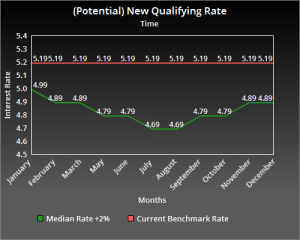Mortgage Strategies for a High-Rate Environment
Mortgage rates have risen sharply across all mortgage products and lenders. Identifying the correct strategy and opportunity between lenders will get you a fair mortgage rate without paying additional interest.
Banks Vs Credit Unions – Over the last 4 months of heavy rate increases I’ve noticed the Big Banks are increasing their mortgage rates much quicker than credit unions.
As of May 19, the big banks are advertising their insured 5-year fixed rates around 4.39%-4.45% while Credit Unions are still offering their 5-year fixed insured mortgage rates at 3.68% – 4.04%.
Short-Term Strategy – Depending on the borrower’s risk tolerance, there are great fixed mortgage rates in the 1-year & 2-year terms when compared to 5-year terms. These shorter terms give the borrower the benefit of a lower fixed payment, but compels them to come to market and renew their mortgage much sooner.
For borrowers believing interest rates wont go much higher than what they are currently at, or they believe rates will smooth out by the time they need to renew, then these short-term mortgages are an excellent priced option.
Credit Unions are pricing the insured 1-year & 2-year fixed at 2.98% & 3.30%
Variable Rates – Over the last 4-months we’ve seen the discount on Variable rate mortgages decrease from Prime -1% to about Prime -0.70%, and as low as Prime -0.35%.
The Prime rate is currently at 3.20% and is expected to increase throughout this year and next year. If the borrower likes the idea of being able to exit their mortgage with minimal penalties this could be a suitable option for them.
Personal Opinion – If I were purchasing a property and expecting to live in it for the next 3-5 years I would strongly consider a credit union first and then look at either a 2-year or 3-year fixed term. In the past, rate cycles generally lasted 24 to 36 months.



